The Rest of the Story
I’ve heard from a lot of you who want to find out what happened to the baby skunks I rescued last month from the window well outside my pattern design studio. Here’s the rest of the story.
When I wrote the last post, it had been five days since I had moved the baby skunks from where I found them in the window well of my studio to under the back deck. I had seen them outside sunning themselves in my garden but on the fifth day after their removal from the window well they looked like they were failing.

I had decided to wait until the morning of the sixth day to see how they looked, and if they still seemed in trouble I’d have to figure out what to do. I was very worried that the mother had disappeared with two of the eight babies, never to return again.
Day Six
All of of the baby skunks were just inside the access door of the deck in a little heap. None of them seemed to be moving about like they normally did. This did not bode well.
Finding Help
Earlier, when I had first found the skunks, I had called Salthaven Wildlife and Education Centre in Mount Brydges, Ontario for help. Calling again, I asked if I might bring the babies to them, as it seemed to me that the mother had now abandoned them. Sadly, Salthaven was not able to take them in and advised me to go to the Ministry of Natural Resources website to look up rehabilitation centers in Ontario to find someone who could.
The website listed various centers across the province. Each had different designations for the types of animals they cared for. For instance, in order to care for skunks the center must be certified to care for animals that could potentially get rabies. That list includes skunks, raccoons, bats and foxes. They call this group of animals RVS or Rabies Vector Species.
I located two potential centers in my area and dialed one in Oil Springs, Ontario called Heaven’s Wildlife Rescue and Rehabilitation and Education Centre (HWR). I spoke to Peggy Jenkins, who runs the HWR, and told her that the babies had been seen outside for several days (this is not normal as skunks are nocturnal) and that although they had seemed to be growing, they were now looking rather desperate.
Peggy told me to box them up and bring them in. She’d have a look at them. If they were doing well I could bring them back home, if not, she’d take them in.
HWR is a non-profit center which is not funded by the government and runs completely on public donations. Peggy creates posts on the animals in need on facebook and asks that individuals or groups sponsor them to cover the cost of their care until she is able to release them into the wild again. Later I learned that one of the nice things about the sponsorship is that you can name the wild baby that you’ve sponsored. Peggy and dozens of other volunteers in Ontario take classes from the Ministry of Natural Resources in Toronto to obtain the knowledge and guidance needed to manage their rehabilitation centers. They are always looking for more volunteers to train.
Taking the baby skunks to the rescue centre
Peggy gave me her address and we arranged to meet that afternoon. I was only able to find five of the six babies as I gathered them up in a towel lined cardboard box. Initially there had been eight in the window well, then six, and now five.
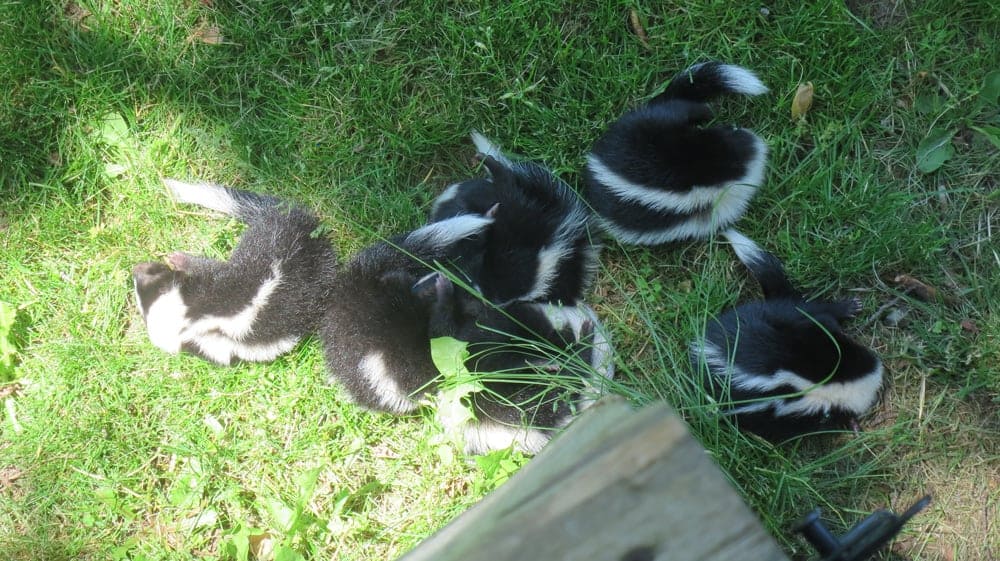
Was one out wandering someplace in the flowerbed? I looked around their usual haunts in the garden and under the bushes. I checked in the pond again. Earlier in the week I had to fish one out of the pond. He had fallen in when getting a drink and could not find his way out. There was no sign of him.
As I gathered up the babies I could see that they were looking very poorly. In fact, two of them were not moving at all. I was unsure if these two were alive or dead, but gently placed them in the padded box.
The drive to Oil Springs is fairly long when you consider you are taking a 40 minute drive with six skunks in the car. I passed by farms and wooded areas along the way and imagined where the center might be located. Likely down some long lane to a farmhouse with outbuildings to house the various animals. Imagine my surprise when my GPS took me directly into the town of Oil Springs. The centre was located in a modest bungalow on the main street.
Heaven’s Wildlife Rescue and Rehabilitation and Education Centre
It was a hot day, so I took my box out of the car and set it down on the front porch while I knocked on the screen door. The main door was open and a large dog came to the door and quietly looked me over. I knocked again, and a sleepy looking fluffy cat appeared.
Looking around the front property I could see signs of animal care. There was a turtle tray on the porch and some pet gates. I called into the house “anybody home?” – nothing. The cat continued to look me over. I wandered over the side gate and called again. A barking dog greeted me there but I could not see any sign of a rehabilitation centre in the yard. Settling down on the front porch, I decided somebody must be home, because there were, after all, two cars in the lane and the door was open. After several minutes I went to the door again. The dog was back. “Where is she?” I asked. Dogs are pretty smart, in my experience, and this one pointed back with his nose, indicating that somebody was further back in the house. That’s when I heard Peggy coming up the basement stairs. ‘Come on in” she said.
Cleaned up and rehydrated
I was surprised to be invited into another human being’s home with a box of skunks. Through the kitchen we went into what might have been a former dining room. It was partitioned off with some gates and on the floor was a fleecy looking pillow cover with a big lump inside it. ‘That’s my skunk’ said Peggy. ‘The Ministry asked me to take him in and use him for education purposes.’ I knew it was illegal to own a skunk in Ontario, so this surprised me.
We went back into another room. Here, there was an eight foot long table with some lighting, rubber gloves, a weigh scale and boxes of medical looking stuff on a shelf behind. One wall was a sliding glass door walkout to the back yard and the other two walls held shelves with cages. Looking into the small cages, I could see a number of little bandit faces peering out at me – raccoons; five, to be exact. One cage seemed to be filled with something energetic that was bouncing around – a weasel. In fact, there were five weasels in the cage. I had five skunks.

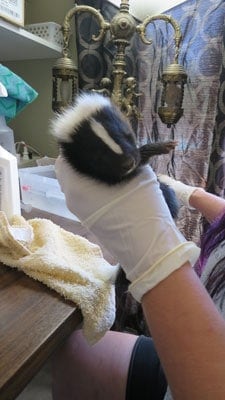 Peggy had me open the box, and with rubber gloves on, removed a skunk. It was one of the sicker ones. She carefully examined it and agreed it was in pretty poor shape, dehydrated and undernourished.
Peggy had me open the box, and with rubber gloves on, removed a skunk. It was one of the sicker ones. She carefully examined it and agreed it was in pretty poor shape, dehydrated and undernourished.
She showed me how its eyes were sunken in from lack of hydration. ‘I don’t know if this one will make it’ she said placing it into one of her cages. Each little skunk got the same examination and then was placed in the same cage. Peggy then rounded up her tools, syringes with saline, more with flea and lice meds, a nit comb and a chart for each of the tiny patients. While I watched she took the first of the five babies out of the cage and gently sprayed him with a pesticide.
It seemed they were full of vermin; some of them even had fly eggs that needed the nit comb to remove them. Apparently when a mother is around she will groom the babies. All the while Peggy cleaned them she talked, calling the skunk babies little Stinkerbutts and remarking on how cute they were. They really were cute even in their sorry condition. After rubbing the flea spray all over them, behind their ears around their faces and everywhere else imaginable, it was time for rehydration. The skin of each skunk was pinched up and using the syringe, saline was injected underneath the fur. Then Peggy carefully rubbed it in. Once that was over, it was time for the flea shot.
Each little skunk was sexed. There were four males and a female. Next, they were weighed on a small kitchen scale fitted with a Tupperware container on top to hold them. A couple of them stomped with their front feet in the container, signaling that they had had about enough.
This is the behavior skunks exhibit before they spray you. Peggy assured me that they were too small to spray yet and laughed at how sweet they were. “How old are they?” I asked. She thought about five weeks old.
The skunks weighted between 175 grams and 208 grams. To chart the patients, Peggy had me colour an ear tip of each baby with bright coloured nail polish. On their individual charts they were labeled with a corresponding color of hilighter so Peggy and her two students could tell them apart for subsequent weigh-ins and other data. They looked so cute with their wet heads and their little white brush cuts. Each skunk baby looked a bit baffled and befuddled after this treatment but the ordeal was almost over. They were placed in a cage lined with the fluffiest towel imaginable to get some rest. All the skunklings had finally been treated and even the two that looked so poorly were more animated after being handled by Peggy.
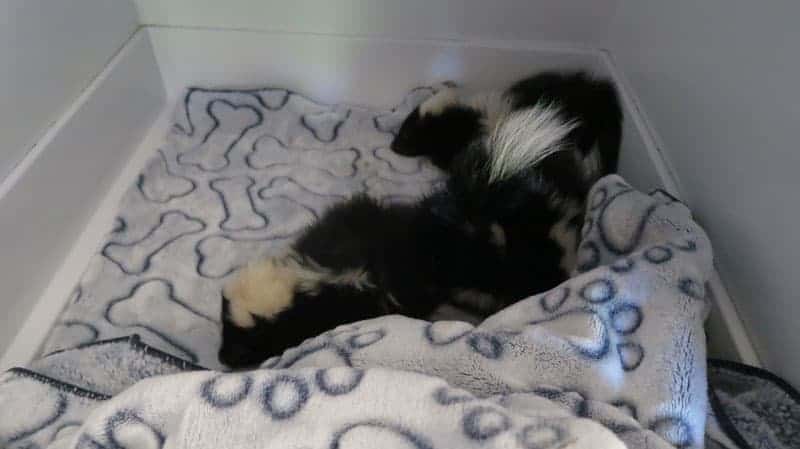
Peggy was not alone. Soon two student helpers arrived. They had been having lunch elsewhere. I learned that these two girls were on some sort of co-op from Stuttgard, Germany. Peggy also employed one young man, a local teen, to straighten up the yard, put cages into the vehicle for transport and deal with the garbage.
After all, they were in the middle of a residential neighbourhood so things had to look tidy. I also learned that there was a farm outside of town where the animals went after they stabilized. It was five minutes out of town and there were specialized cages and pens for all the animals.
About a week later on I went to the Heavens Wildlife Rescue Rehabilitation and Education Centre facebook page. There were all five of the babies displayed looking very healthy and cared for. All of them had been adopted and named, and all of them were looking as cute as buttons.
Peggy will be transferring them to the farm soon and after a couple of months they’ll be ready to be released into the wild again. I went home knowing that I had done the best for my little friends. Sadly, I did find the 6th missing skunk a few days later when his body floated up in the fish pond. He must have fallen in when looking for water.There are no more skunks in my yard. Before, I would have thought that was a good thing, but to tell you the truth, I will miss them and the spice they added to my life. But when I think about it, what a nice ending to a story that could have ended a lot differently.
If you are interested in helping HWR please visit their facebook page and sponsor an animal in need. Here’s the link again.
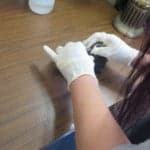
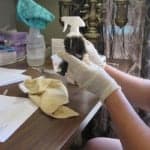
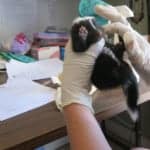
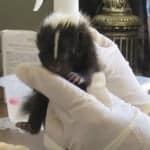
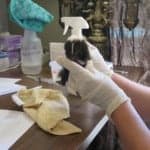
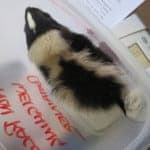
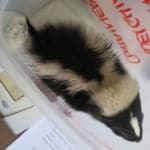


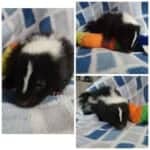
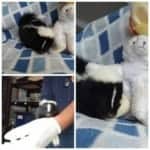
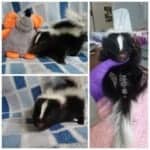

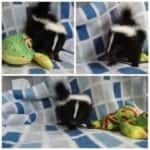
Leave a Reply